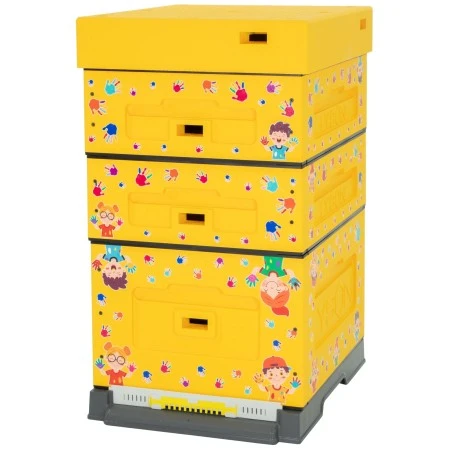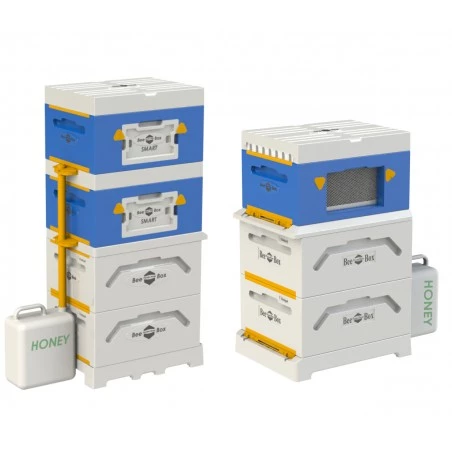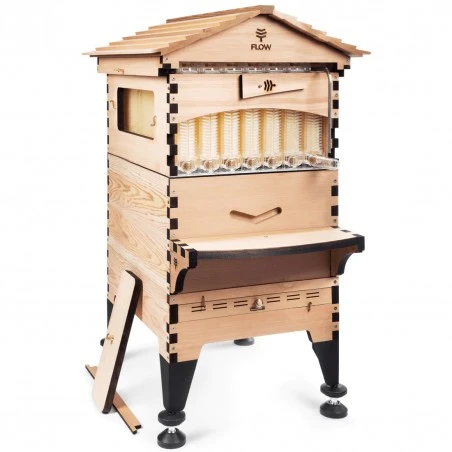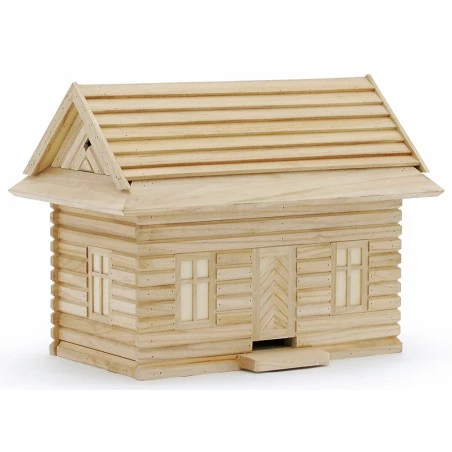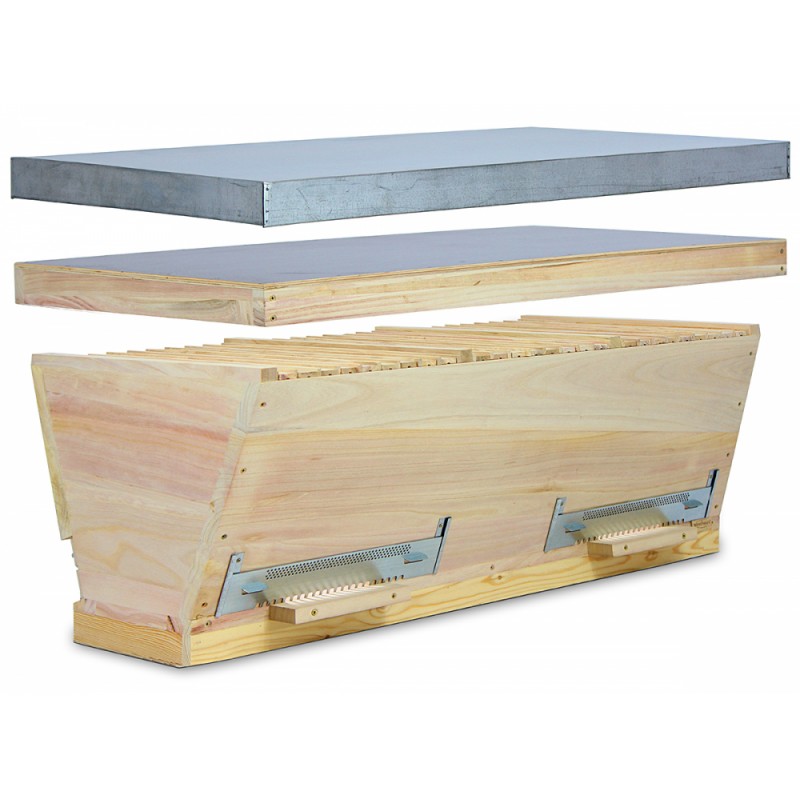








Horizontal Kenyan Top Bar hive made of wood, with all its elements. Double size. Ideal for amateurs curious about this type of handling, not recommended for professional beekeepers.
The Top Bar Hive, is a model originating in Africa and is characterized by being horizontally developed, just like the Layens hives that are commonly used in Spain.
The hive is V-shaped, and this can be seen in the frames, since they are wider at the top than at the bottom. These frames are bars without wires, on which the bees will freely build their combs.
Due to its characteristics, it offers a habitat that is very close to the living conditions of wild bees, leaving them a large space in which they will be free to create their honeycombs.
This hive is ideal for leisure beekeeping, as it requires little manipulation and little additional material: wax sheets, wires, supers, excluders, etc. are NOT needed. The spirit of this hive is more of an ecological approach than a productivist approach.
This hive includes
- Double body with 26 wooden bars
- Two divider boards to divide the hive
- Two screened bottoms with tray
- Two entrances with protectors and landing boards
- Wooden inner cover
- Galvanized top metal roof
External dimensions approximately 112 x 58 cm, height 43 cm. Approximate weight 23kg
ABOUT HANDLING
As we have previously commented, they are of horizontal development; therefore, they do not grow vertically: supers are not used. Its growth goes from end to end of the hive.
It is an almost autonomous hive, it requires little time and equipment, which is why it is famous for being very easy to handle. However, it requires constant control and regulation of the space to ensure that the bees have the appropriate habitat as required at any time.
As the colony grows, you have to move the divider board and add more slats. Conversely, after the honey harvest, the hive space should be reduced so that there is less room for the bees to warm themselves more efficiently during the winter months.
ABOUT HONEY EXTRACTION
Another of the peculiarities of this hive is that since it does not have wired frames, the bees tend to adhere their honeycomb to the walls of the interior cavity of the hive. This implies, if you want to remove the honeycombs from the hive, you have to cut and remove the constructions that have been made on the walls with the help of a hive tool.
Finally, the honeycombs of the Top bar hive, unlike the rest of conventional hives (such as Langstroth, Dadant or Layens) cannot be extracted in a conventional honey extractor. To remove the honey from the bars, the honeycombs must be crushed or pressed.

Horizontal Kenyan Top Bar hive made of wood, with all its elements. Double size. Ideal for amateurs curious about this type of handling, not recommended for professional beekeepers.
check_circle
check_circle

